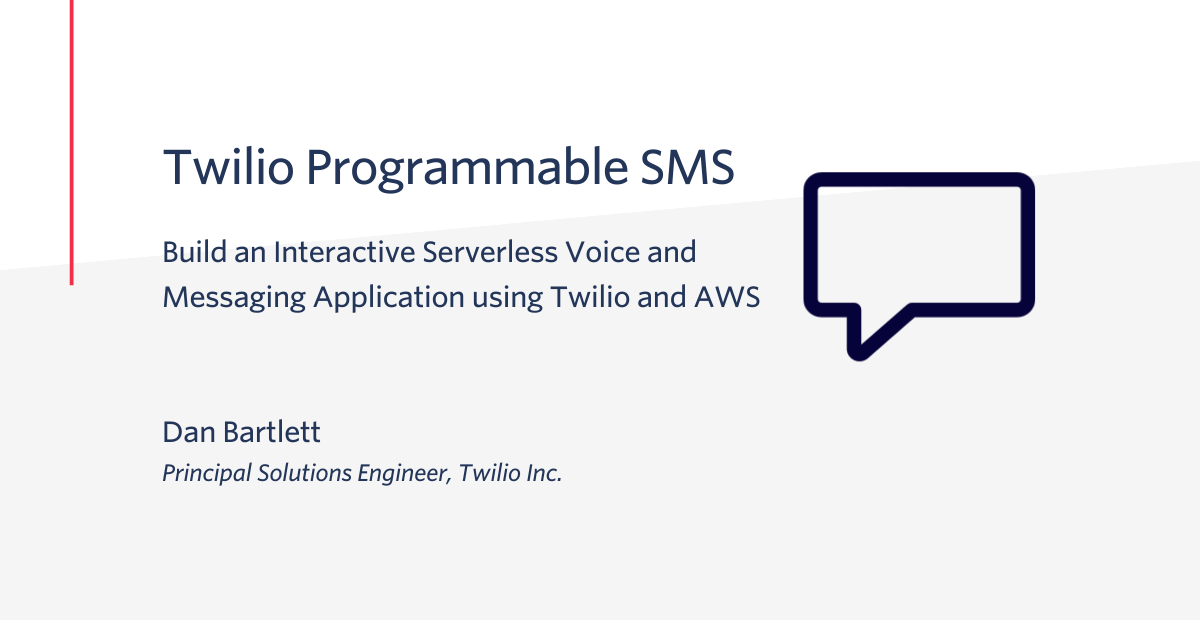-
 A Proof of Concept to Analyze and Process Inbound MMS from Twilio using OpenAI and AWSDan Bartlett
A Proof of Concept to Analyze and Process Inbound MMS from Twilio using OpenAI and AWSDan Bartlett -
 Microservice for Sending Email using Twilio SendGrid Email APIDan Bartlett
Microservice for Sending Email using Twilio SendGrid Email APIDan Bartlett -
 Microservice for Handling SendGrid Inbound ParseDan Bartlett
Microservice for Handling SendGrid Inbound ParseDan Bartlett -
 Microservice for Handling SendGrid Event WebhooksDan Bartlett
Microservice for Handling SendGrid Event WebhooksDan Bartlett -
 Blueprint for an Enterprise Communications Layer Leveraging Twilio APIs for Messaging (SMS and WhatsApp)Dan Bartlett
Blueprint for an Enterprise Communications Layer Leveraging Twilio APIs for Messaging (SMS and WhatsApp)Dan Bartlett -
 Build a Serverless Queueing System in AWS to Call Twilio’s APIs with Metering, Monitoring, and Error HandlingDan Bartlett
Build a Serverless Queueing System in AWS to Call Twilio’s APIs with Metering, Monitoring, and Error HandlingDan Bartlett -
 Twilio Serverless Status Callback Handler built in AWSDan Bartlett
Twilio Serverless Status Callback Handler built in AWSDan Bartlett -
 Build a Messaging App Demo Proof of Concept with the Twilio Conversations APIDan Bartlett
Build a Messaging App Demo Proof of Concept with the Twilio Conversations APIDan Bartlett -
 Build an Interactive Serverless Voice and Messaging Application using Twilio and AWSDan Bartlett
Build an Interactive Serverless Voice and Messaging Application using Twilio and AWSDan Bartlett